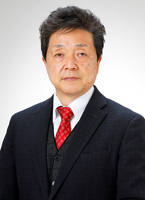How to build a flat relationship Hajime Ota (Professor of Doshisha University)

Japan is said to be ”vertical society” (Chie Nakane, Human Relations in a Vertical Society, Kodansha, 1976), and even within organizations there is a strict hierarchy and strict hierarchy.
This type of pyramid-shaped organization was suitable for an industrial society where the highest priority was to complete routine tasks efficiently and without mistakes.
However, in a post-industrial society where information technology and softwareization have advanced, vertical organizations become inefficient. This is because information is basically cross-organizational, and work is progressed through communication rather than orders.
Furthermore, creative ideas and innovations do not occur under the control of superiors and subordinates. As digitalization progresses, on-site information is immediately transmitted to top management, and all employees can share information, which will reduce the role of managers and reduce the number of layers.
It is necessary to transform from a vertical organization to a horizontal organization.
However, in Japan, the custom of seniority and title-based culture still persist, making it difficult for organizations to become more flat. Furthermore, the relationship between superiors and subordinates tends to take on a personal nature that goes beyond their work roles.
For example, superiors talk to their subordinates in polite language, while subordinates call their superiors by their job title and speak in honorific language. This can lead to excessive arrogance and power harassment.
So, what can we do to create a more flat relationship not only in terms of organizational structure but also in terms of personality?
One effective method is to occasionally reverse the hierarchy and the main customer.
For example, in recent years, an increasing number of companies have adopted ”360-degree evaluations,” in which managers are evaluated by their subordinates as well. Some companies use ”reverse mentoring,” where junior employees mentor executives.
Although this is not a relationship between superiors and subordinates, in one overseas hospital, patients are in charge of orientation for new staff such as doctors and nurses (Takuya Matsumoto). Thinking about ”autonomy” from the perspective of mental health care and its surroundings” Kohei Saito et al., ”Common’s”autonomy” theory” Shueisha, 2023).
If implementing these systems is too difficult, why not leave the planning and management of in-house recreation and relatively small-scale events to younger employees?
In a one-sided hierarchical relationship, it is difficult to create a flat relationship.
Japanese companies in particular have a tradition of paternalism (patriarchy), so it is easy for them to unconsciously become entrenched in hierarchical relationships.
That is why by incorporating a two-way relationship in this way, the relationship becomes closer to a flat one, and mutual understanding deepens as both parties experience the other person’s position.
Furthermore, it will be an opportunity for subordinates to develop their leadership skills, and they will also feel a greater sense of self-worth, knowing that they have been useful to others.
In order to create a level relationship, it is not enough to advocate a change in mindset; it is necessary to create a system.
